Great news for Tassie hunters, with the Hodgman-led Liberal government announcing changes to the way it manages its wild deer population.
While this is the same government that, a few months ago, insulted all bowhunters when Gutwein called them ‘disgusting and cruel’, used his position to bully and intimidate a legitimate hunting business, and overnight, banned all bowhunting in the state without any due process being followed (making us the ONLY state in Australia to completely ban bow hunting), it is good to see the Liberal government finally start using science and data to inform their wildlife management decisions (instead of the emotional hysteria of animal activists).
So what are the changes and how will they impact hunters?
Extended season
 Tassie has always had one of the shortest deer hunting seasons we have ever seen, with recreational hunters getting a grand total of 12 weeks and 2 days each year to hunt fallow deer.
Tassie has always had one of the shortest deer hunting seasons we have ever seen, with recreational hunters getting a grand total of 12 weeks and 2 days each year to hunt fallow deer.
This is traditionally split into stag (antlered) and doe (antlerless) seasons.
This year, the doe (antlerless) season was split into two blocks – 9 to 31 March 2019, and 11 May to 30 June 2019, while the stag season ran from 23 February to 31 March 2019.
But starting in February 2020, recreational hunters will get 39 weeks to hunt fallow deer, with doe season opening in February and running through until the end of October, which pretty much means the only time does won’t be fair game is during the fawning season (November – March).
At this stage, the stag season remains unchanged but that’s still a lot more opportunities to fill the freezer with some free range venison.
No limits, no tags
Under the current system, recreational hunters in Tassie get three tags to use during deer season – 1 stag tag, and 2 for antlerless deer. If a hunter doesn’t take a stag, they can take a third antlerless deer.
Any deer taken must be tagged, regardless of sex.
To help manage deer populations, the government has now removed quotas and tags for antlerless deer.
That means recreational hunters and landowners are pretty much free to take as many does as they want from February to October each year.
Longer crop protection permits
Under the current crop protection permit system, landowners are issued 12 month permits and receive a limited number of tags each year to reduce deer populations.
New changes coming into effect in March 2020 will see landowners supplied with five year crop protection permits for antlerless deer with no quotas or tags required.
At this stage, landowners will still need to apply for tags if they want to reduce the number of antlered deer on their property.
While the quotas have been removed, both recreational hunters and landowners with crop protection permits will still be required to complete annual ‘Take Returns’ to assist with monitoring overall deer numbers.
For more details on the changes, check out the FAQs at the bottom of this article.
The good, the bad and the ugly
For the most part, we see these changes as an overall win for hunters in Tasmania.
Having a longer season to hunt is a definite win in our books and should reduce our need to travel interstate just to fill our freezer.
We are a little bit concerned that there’s an overlap between the start of doe season (February) and the end of fawning season (March), which could result in more fawns being left orphaned. But hopefully hunters will take a bit more care in selecting deer without fawns at foot (or close by).
Removing tags and quotas on antlerless deer has a much greater chance of making a dent in overall deer numbers. This is a win for agriculture, reduces the pressure on the landscape and our native wildlife. It also gives hunters almost unlimited access to free range, organic venison – our favourite game meat.
However, moving so quickly from such a tightly controlled, tag-and-quota system to an essentially open season with no limits may lead to some teething problems.
While there’s an obvious need to manage deer numbers and reduce the impact they have on farms, nobody really wants to see deer completely eradicated.
For starters, deer are a valued recreational hunting resource for Tasmanians and hunting has played a huge part in our local culture for hundreds of years.
There’s also huge potential for deer to play an important role in our economic prosperity.
We have all seen the figures in the recent study conducted by the Federal government into the economic and health benefits of recreational hunting. It is estimated that hunting contributes a whopping $2.4 billion to the Australian economy – $800 million in direct contribution and $1.6 billion in flow-on economic activity. Victoria and New South Wales recognise the value of recreational hunting, and make it easy for interstate and international hunters to hunt in their states, which is probably why they receive the lion’s share (around 60 percent) of the economic benefits. Each year, hunters contribute around $650 million to the New South Wales economy and $512 million to the Victorian economy.
In comparison, our short season, excessive red tape and general disrespect for the hunting community means hunting only contributes $97 million to the Tasmanian economy. Imagine how much more that could be if our government stopped insulting hunters and made it easier for them to visit?
It will be interesting to see what impact – negative or positive – these changes have in the long run, and what other changes it may usher in.
A couple of changes we’d love to see:
- More land made available for hunting
- A longer stag season that also allows hunting in the rut
- Bow hunting to be allowed
- Hunting tourism recognised as a valuable economic resource
What do you think about the changes?
FAQs
Q: Is there still a quota limiting the number of antlerless fallow deer I can take under a recreational hunting licence?
A: No. There will be no government quota applied to the antlerless fallow deer hunting season. Landowners may choose to limit the number of deer they will allow you to take on their land. However, recreational hunting licence holders are still limited to only taking one male deer each year.
Q: Do recreational hunters still need to submit an annual game take return for antlerless fallow deer taken under a recreational hunting licence?
A: Yes, to help the government monitor deer populations and address concerns that some stakeholders have about compliance, recreational hunters will still need to submit an annual game take return for antlerless fallow deer. A take record sheet will be provided in Game Tracks for the hunter’s records, and a separate form (to be returned to the department) will be issued with your recreational hunting license. As is currently the case a recreational hunting licence will not be issued to anyone who has an outstanding take return.
Q: Why has the government increased crop protection permits to five years for antlerless fallow deer?
A: It is believed this change will reduce the administrative burden on landholders and hunters, allowing them to better manage the control of antlerless fallow deer for crop protection purposes.
Q: Do landholders still need to submit a crop protection permit return for antlerless deer taken under crop protection permits?
A: Yes, crop protection permit holders are required to record all deer taken under their permit, whether taken by themselves or by another person authorised by them, and to provide take information to the Department annually to assist with population monitoring. Upon expiry of a five year crop protection permit, ‘take’ information must be returned to the Department.
Q: When will fallow deer antlerless 5 year crop protection permits be available?
A: The fallow deer antlerless 5 year crop protection permits will commence at the beginning of the antlerless fallow deer
season in 2020.
Q: Is there still a quota limiting the number of fallow deer taken under crop protection permits?
A: Crop protection permits issued to take male fallow deer (bucks and immature males) will have a quota set and determined by Wildlife Management Officers, in conjunction with a discussion with the applicant and possibly a property inspection. However, there will not be a quota applied to antlerless deer taken under a crop protection permit.
Q: Do I still need to use tags for antlerless fallow deer taken under crop protection permits or a recreational hunting licence?
A: No, tags will now only be required to be fitted to male deer taken under a recreational hunting licence or crop protection permit. As of the beginning of the 2020 antlerless fallow deer season, there will no longer be a requirement to fit a tag to antlerless fallow deer taken under a recreational hunting licence or a crop
protection permit. Hunters purchasing a recreational deer licence will therefore only be issued with one tag entitling them to take one male deer during the gazetted male deer season.
Q: Is this the beginning of deregulation for fallow deer?
A: No, wild fallow deer will remain Partly Protected under the Wildlife (General) Regulations 2010. Under the current changes, five year crop protection permits only apply to antlerless deer (females, does). Annual permits will still be required to take male fallow deer (immature and bucks) for crop protection and will be available for a maximum of one year. Game licenses will still be required to take adult male deer during the gazetted recreational hunting season.
View the full FAQ from DPIPWE.
What is I Am Hunter?
I Am Hunter has a lofty goal to change the way hunting is perceived in the community. Hunters can find a wide range of tools and resources to help them improve their skills and become positive role models and advocates for the hunting community.
I Am Hunter is a member-supported website. By paying a small monthly or annual fee, members help keep most of the content free, which in turn helps to spread a positive message about hunting with the wider community.
In return, members enjoy exclusive rewards and benefits including member-only content, discount codes, and giveaways.
Related content
Our other channels
Follow us on Facebook
Follow us on Instagram
YouTube
Subscribe to our YouTube channel.
Get our newsletter
Get our free monthly newsletter direct to your inbox
Listen on iTunes
Listen to our podcast on iTunes.
TV series
Watch I Am Hunter episodes on My Outdoor TV (MOTV)


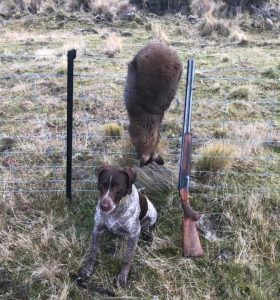
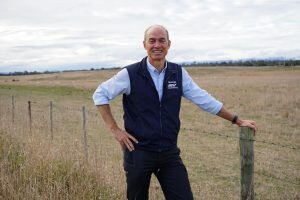
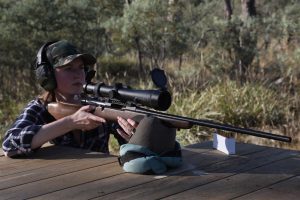
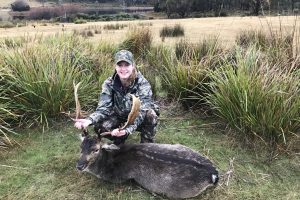

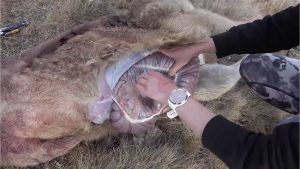
6 thoughts on “Changes to Tassie deer season”
Hi Steve, really feel for you mate. The cruel irony is that the law is often far too lenient on the hardened criminals who break the law wilfully and repeatedly, and far too stringent on the law abiding citizens who get caught on a technicality for something that is often accidental or unintentional.
Please reply
I refer to the new changes of open slaughter deer hunting and I agree that it’s good for the economy however please explain the following, I have been hunting for the past 55 years in Australia and overseas and have never poached or been in any sort of trouble and have never done anything wrong to parks and wildlife. I’ve been a member with ADA for 23 years and I’m a member with SSAA.
The police came to my house for a matter totally unrelated to me or my family and found unsecured ammunition which lead to a conviction and a hefty fine.
I had my gaming licence suspended for 5 years!!!
I’m 73 years of age and I’ve been robbed of my favourite sport not only that I also compete in field trials and retrieving trials of which I introduced to tasmania. I have been slammed with a double whammy and can’t even compete with my dogs in field trials.
I have been forced to hunt interstate and spend my money elsewhere. Where is the fairness in that?
As a recreational Tasmanian Deer hunter who does a large amount of crop protection i am wondering if we will still need to take the entire carcass to our place of residence. with the new changes i am wondering if we can break the animal down in the field and only take home the parts of the animal we can use like they do in Victoria?. As i am sure you are aware the disposal of a deer Head, front legs(if damaged from the shot), rib cage, hoofs and skin can be challenging when you live in a built up area and this may also eliminate some of the illegal dumping that occurs.
anyway thank you for your time and i look forward to a reply